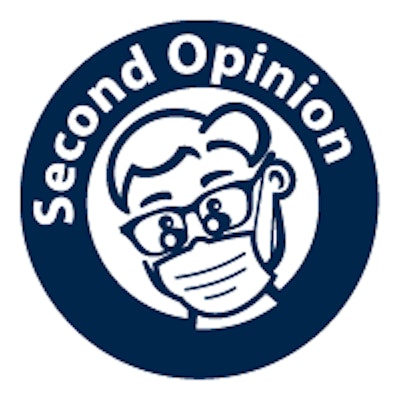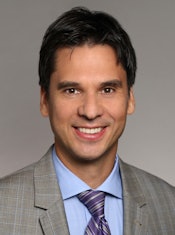
I appreciate Dr. Frank Catalanotto's recent commentary on DrBicuspid.com on one of our recent studies examining the percentage of Americans reporting various kinds of barriers to dental care.
He has, however, misstated several of our findings and policy implications. Dr. Catalanotto rightly points out several important limitations of the data set we used. I fully agree with him, and we are very transparent in our report and go to great lengths to explicitly document these shortcomings. I will not repeat these here as they are discussed at length in the report.
 Marko Vujicic, PhD.
Marko Vujicic, PhD.Nowhere in our report do we say supply-related barriers are not an issue. We simply state that supply-related barriers to dental care are reported far less frequently than barriers related to financial factors. We also are very careful to point out that "our findings regarding supply-related barriers need to be considered in the context of the Affordable Care Act (ACA). The large number of individuals gaining dental benefits will likely result in increased demand for dental care and may lead to increases in supply-related barriers in the future. This remains an important area of future research that the Health Policy Institute is pursuing."
In fact, a separate report we released in September shows that among adults receiving Medicaid, difficulty finding a dentist that accepts Medicaid is an important issue. But, again, not as important as financial factors.
Dr. Catalanotto's claim that the report is "promoting politics over data" is puzzling. Nowhere in our report do we promote any specific policies. We merely point out that in light of these data and other complementary research, the conventional wisdom that provider shortages are the most important factor limiting access to dental care for low-income populations ought to be re-examined. More research is needed, and the Health Policy Institute (HPI) will continue to contribute to this important research agenda in the coming years.
“Supply-related barriers to dental care are reported far less frequently than barriers related to financial factors.”
More broadly, I want to applaud Dr. Catalanotto for very effectively highlighting the key issues the dental community will have to grapple with in the coming years. A lot more adults, and children as well, will be gaining dental benefits through Medicaid because of the ACA.
Do we have enough dental care providers to absorb the Medicaid expansion? In my view, we do not have reliable data on the percentage of dentists that accept Medicaid. Nationally, 32% of general practitioners in private practice treated at least one patient covered by public assistance (for example, Medicaid, Children's Health Insurance Program, Veterans Affairs, and so on), according the most recent HPI survey of dental practice. But research shows these types of surveys can overestimate healthcare provider willingness to treat Medicaid patients (Pediatrics, June 11, Vol. 127:6, pp. e1428-e1435). Nor do we have an appropriate methodology to assess the proximity of Medicaid-accepting dental care providers relative to where the Medicaid population lives and works. Simplistic population-to-provider ratios simply do not provide this insight and, as the U.S. Government Accountability Office has noted, come with significant shortcomings.
The supply of dentists is expected to increase in the coming years. There is also excess capacity in dental offices, and under the right conditions, the existing dental care system has shown to be capable of absorbing large inflows of Medicaid patients (National Bureau of Economic Research Digest, April 2014, No. 20053). There is compelling evidence that a combination of patient education and outreach, streamlined administrative procedures, and enhanced provider incentives (Journal of the American Medical Association, July 2011, Vol. 306:2, pp. 187-193) are critical "enabling conditions" that make Medicaid programs successful. As Dr. Catalanotto pointed out, there is also emerging evidence on how alternative dental care delivery models impact access to dental care. It is important to continue generating, synthesizing, and disseminating research on the various approaches available to policymakers. Through the Health Policy Institute, the American Dental Association is committed to leading this knowledge agenda.
Marko Vujicic, PhD, is the chief economist and vice president of the Health Policy Institute at the American Dental Association, where he is responsible for overseeing all of the association's policy research activities. Prior to joining the ADA, he was a senior economist with the World Bank in Washington DC, where he directed the global health workforce policy program. He is also a visiting assistant professor at Tufts University in Boston.
The comments and observations expressed herein do not necessarily reflect the opinions of DrBicuspid.com, nor should they be construed as an endorsement or admonishment of any particular idea, vendor, or organization.



















